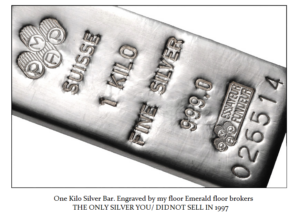Understanding Silver and Nickel Dynamics During War Times: An In-Depth Analysis
At Extreme Investor Network, we pride ourselves on delivering insightful analyses that go beyond surface-level economic discussions. As we examine the fascinating interplay between silver and nickel during wartime, particularly World War II, readers can gain a unique perspective on how precious metals correlate with broader economic conditions.
The Truth About Silver During World War II
There’s a common misconception that silver’s value declined during World War II. However, the reality is more nuanced. While it’s true that the price of silver was fixed during this time due to government regulations aimed at controlling inflation, its relative importance fluctuated compared to other metals, particularly nickel. During the war, nickel became increasingly crucial for military applications, leading to replacement strategies where near-pure silver was substituted in the composition of the 5-cent coin—a fascinating decision that had both economic and symbolic implications.
The Price Fixing and Its Aftermath
Price fixing was part of the government’s wartime strategy to prevent inflation, creating a facade that made it seem like silver had lost its value. However, this was merely an artificial suppression of prices. As soon as the war concluded, the market corrected itself dramatically. The cessation of price controls led to a significant surge in silver prices in 1945, demonstrating how pent-up demand and market forces can drive commodities to their true values.

Historical Context: Silver’s Rise and Fall
Analyzing historical data, as seen in the US Dollar Index from 1900 to 1939, reveals critical correlations between economic stability, stock market behavior, and commodity pricing. The major low for silver was recorded in 1932, coinciding with the stock market crash and a soaring dollar value. By the time we reached 1966, silver was retesting its World War I highs, fueled by the end of price fixing and increased industrial demand.
Silver vs. Nickel: A War Indicator
Investors should pay close attention to the relative pricing spread between silver and nickel as a potential indicator of wartime economies. The complexities of resource allocation during conflicts often dictate which metals are prioritized, and this relationship can offer insights into future trends. As we look at the current global landscape, understanding these dynamics could prove invaluable for navigating the investment landscape.
Why You Should Care
For investors at Extreme Investor Network, grasping the historical context of metals like silver and nickel is more than an academic exercise; it’s about anticipating future market movements. As nations face new kinds of conflicts and economic pressures, the past can provide a roadmap for where we might be heading. The correlations found between these key commodities and wartime priorities remind us that historical patterns tend to repeat themselves, especially in turbulent times.
Join us at Extreme Investor Network as we continue to explore these themes, arming you with the knowledge to make informed investment decisions amidst the ever-changing economic landscape. Are you ready to delve deeper? Stay tuned for our upcoming insights, where we’ll break down the implications of current economic policies on precious metals and what they could mean for you as an investor.

